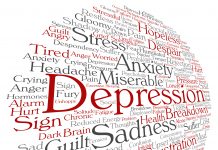Describing Pain and Symptoms
Pain is a very subjective sensation. One person’s headache may force him to bed while another person’s headache may allow her to continue to work. The following checklist will allow you to describe your pain and other symptoms as clearly as possible. If you or a family member/friend can, write down the answers for your doctor.
Where in the body did the pain/symptom begin?
When did it start (date and time)?
On a scale of 1-10, with 10 equaling the worst pain you have ever had (e.g., broken arm, back pain, severe toothache), how do you rate your pain?
Describe any other symptoms you have had.
What were you doing at the time of the pain/symptom?
To what degree does your pain/symptom limit your normal activities?
How long does it last (an hour, all day)?
Is it constant or does it change?
Does it stay in one place or spread out to other parts of your body?
What makes it worse?
What makes it better?
Other information.
Pain Control Medication
Pain has different degrees of intensity. Pain control experts divide pain into: mild, moderate, severe, very severe and overwhelming. At present, experts recommend the following types of medication for each level of pain:
Mild A non-narcotic e.g., aspirin (ASA).
Moderate weak narcotic e.g., codeine.
Severe An intermediate-strength narcotic e.g., increased dose of codeine.
Very severe A potent narcotic e.g., morphine.
Overwhelming A potent narcotic and sedative e.g., diazepam.
It takes time and experimentation to arrive at the exact combination of medications that will keep a patient painfree and alert. Patients and families can shorten this process by recording any positive or negative results of new medications and talking to their doctor about these results.
Other Pain Control Techniques
There are other treatments for pain control. A few of these techniques use medications in a different way or use other forms of therapy such as:
Radiotherapy Radiation is used to shrink tumours to reduce a patient’s symptoms.
Nerve blocks For localized acute cancer pains, a local anesthetic or neurolytic injection is given to block nerves from sending pain messages to the brain. Results may be temporary or longlasting.
Hypnosis – A hypnotist can use oral suggestion to sometimes increase a person’s pain threshold.
Acupuncture – This ancient Chinese art uses sterile needles in very specific spots to neutralize pain messages going to the brain.
Neurosurgery – With the proper use of medication and other techniques, the need for neurosurgery should be uncommon. If other measures do not work, neurosurgery should not be delayed.
Caring For Loved Ones At Home – Free eBook – click here.
Click here for Harry’s previous article on Making A Bed.
This article is intended for informational purposes only. If you have any questions or are considering any recommendations, please consult your health practitioner.





























